
The technology level of a D&D setting is sometimes difficult to gauge, and frankly is often under-considered, by both publishers and DMs alike. Is the setting medieval? More renaissance? Ultimately modern just with magic replacing tech? Some strange amalgam of all three? It’s up to the DM to decide, but the rules don’t offer much guidance and the need for it often comes up at surprising moments.
Take for example the work Delta did on researching historic lamp oil. The description in the old books really makes lamp oil sound like kerosene – highly flammable and potentially explosive – but kerosene didn’t come into common usage until the 1850’s. If you’re after a medieval or even renaissance era feel for your game, more likely lamps are filled with a vegetable oil similar to olive oil, which as Delta proved won’t ignite without some kind of wick. Hardly the weaponizable substance presented in so many versions of D&D.
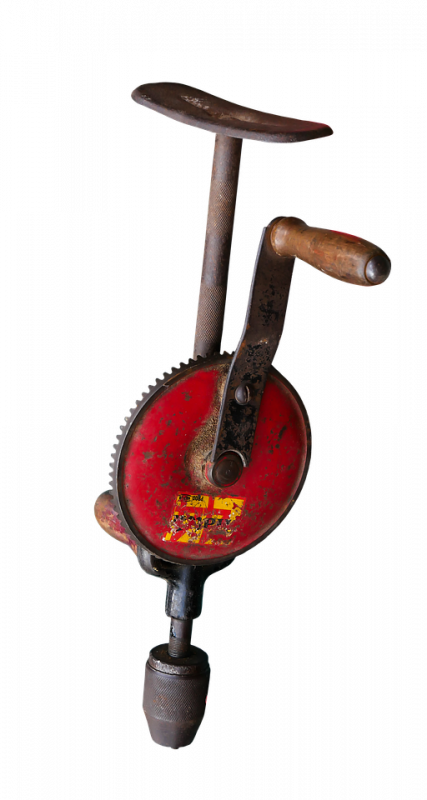
The question hit me in the face one day when one of my players asked about purchasing a hand drill. He had the clever idea of boring quick holes in doors to spy on who or what might be on the other side before opening them. I had to think for a second – are there hand drills in D&D? I mean, we certainly agree there are no power tools, but my grand-dad had some of those old hand-powered crank and gear drills down in the basement when I was kid. When did those come about?
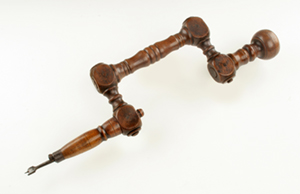
Well, it turns out, like many tools we’ve become accustomed to, this thing comes from post-industrial revolution, around the mid to late 1800s. In fact, that’s also when we start to see what most of would recognize as drill bits. Which is not to say there were no drills in medieval or renaissance period. In fact they’ve been around as far back as the Egyptians, and it’s around the 1400s or 1500s when we start to see the “hand brace”, a C-shaped tool that allows for continuous drilling motion.
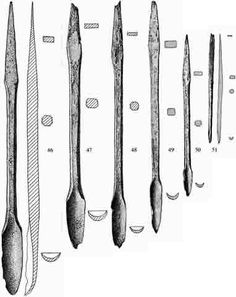
But the actual sharpened bit would be pretty disappointing by modern standards. Less of the spiral blade we’re used to that’s great for channeling the material up and out and more like a sharpened spoon or point. I imagine tools like this would require a lot of patience to use, as well as a fair amount of elbow grease applying pressure against the material being drilled.
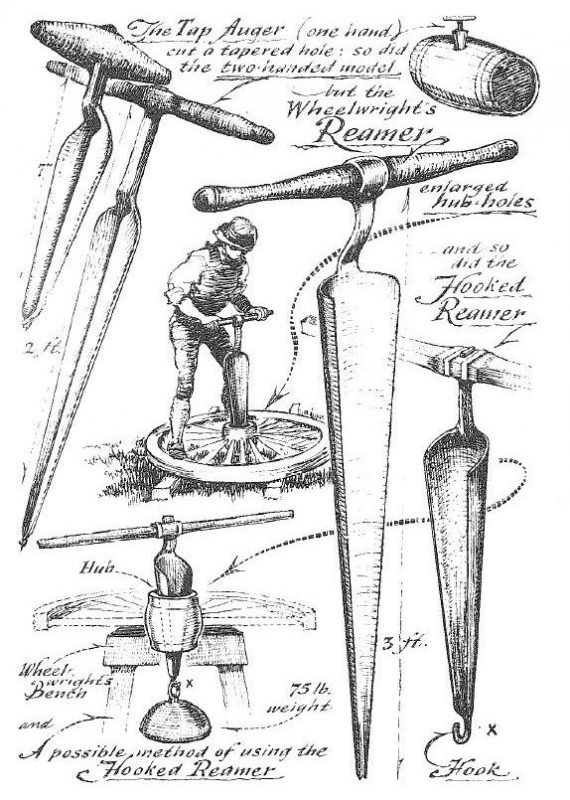
What I ended up giving my player when he requested an artisan to build him his drill was a large fore-arm sized C-shaped brace with a big pad at the top that he could lean his chest against while cranking away with both hands. Hardly the stealthy spy-hole creator he was hoping for. He did his level best to use it, and I ruled that it both took quite a bit of time to actually make a hole, and that there was a good chance that anyone on the other side of the door being drilled would hear him at work. It wasn’t long before this tool was replaced at slightly higher level by getting the magic-user to memorize clairvoyance.
More recently a player has suggested obtaining a 10′ pole that can be broken down for easier transport. He’s imagining something that comes in 2 or 3 sections, and screws together like a pool cue. Hmm, I wondered, does my medieval/renaissance inspired setting have that kind of threading? Are screws even used as fasteners? Off I went to research the history of screws.
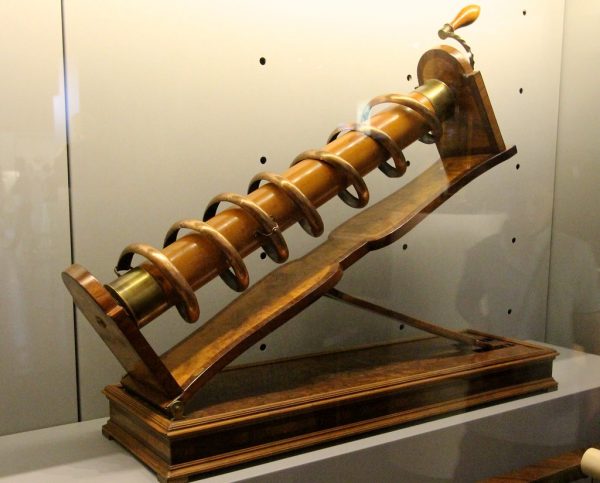
What do you know – it turns out that much like drill bits, our modern idea of a screw as fastening implement doesn’t really exist until around 1770. This makes sense to me – I have done some revolutionary war reenactment and I don’t see a lot of screws in our gear.
Sure, the concept of a screw dates all the way back to the first century BC, and I’m sure a lot of us have seen demonstrations in local science museums of an Archimede’s Screw. That, however, was really used for moving material like water (and hello eventual modern drill bits), but to get small screws used as fasteners we first need to invent a screw cutting lathe.
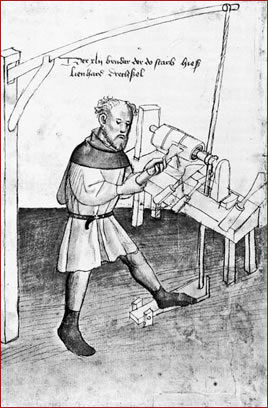
The lathe itself also dates back to ancient Egypt, but something with the precision to cut a screw isn’t going to show up until the late 1700s. In a more medieval setting, the pole lathe is around but used primarily for making wooden cups and bowls. Or possible, a nice sturdy and straight 10′ pole.
So, my advice is, take a moment to think about the technology level of your game. Is it purely medieval? More renaissance? Are there mechanical clocks? Has black powder be weaponized? Have glass lenses been ground for use as spy glasses, or do merchant ships still stick to trade routes that hug the coasts? Here’s a nice site I found with a list of dates of various important renaissance period inventions and discoveries. Where along this timeline do you see your D&D campaign?

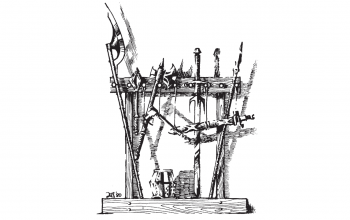

Great topic!
One shortcut is, if it requires machined wrought iron or steel, it’s unlikely to have existed. Chisels and hammers sure, but nothing with small and very durable moving parts.
This is a simplification but it works at the table.
Thanks! I think what I always find surprising is the often huge gap of time between original invention and general adoption. Lack of mass production really inhibited a lot of advances from taking hold.
Agreed this is a great topic! Last year I made a ruling in a game that pulleys wouldn’t be available in D&D, which caused a similar day of research later to see that I was pretty clearly wrong about that.
https://deltasdnd.blogspot.com/2018/06/on-pulleys.html
I think the rules don’t really force the issue one way or another but tech in D&D is basically early 19th century, the sort of stuff you would see in the peasant village in any Frankenstein movie, with the exception that gunpowder is rare to non-exsistent. Ships, for example, are often envisioned as 18th/19th century type vessels. The politics though are very feudal and most of the cultures are modeled on medieval types.
Only indirectly – usually through the equipment list. But also that pesky desire to wrap up every fantasy genre ever. We want our medieval societies… but also pirate ships.
I don’t really put my setting on a specific timeline. I mean, it is a “medieval” world, but its been stuck in that period for centuries, or longer. So pretty much anything pre-industrial can exist, but it will likely be rare, bigger, and artisanally made. Or like I chimed in to Delta’s pulley discussion, A Dwarven master craftsman can make you one….
Good stuff, thanks Paul!
Allan.
Hi there. Sorry to ruin your anti screw scheme but there are depictions of a screw-together poleaxe from the mid 15th century and there’s a beautiful finely threaded screw vice surviving from Henry VIII’s armour workshop in Greenwich. There is also a nice manuscript illustration of a threading tap from ca 1505.
The “Gladiatoria” fencing manual from late 15th century has a famous part where one fencer unscrews the pommel of his longsword and throws it in his opponet’s face, thus “ending him rightly”.